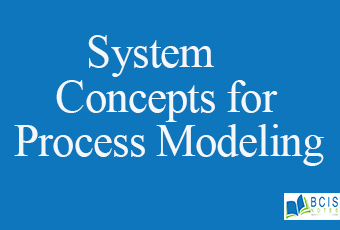
System Concepts for Process Modeling
Process Modeling definition can be described as a set of activities that must be followed to allow the creation of one or more models for representation, communication, analysis, design, synthesis, decision making, and control of the business. It aims to understand the inner workings of the organization – from end to end. For this reason, various artifacts are used such as organization charts, positioning diagrams, process flows, among others. They provide an overview of the activities performed by employees on a daily basis, creating a basis for studies, process improvement, cost estimates, and a correct understanding of business processes.
Some of the concepts for Process Modeling are:
- Business model
A business model is a tool for creating economic, social (or other values) forms. The term ‘business model’ is used for a wide range of informal and formal descriptions to represent core aspects of business, including purpose, offerings, strategies, infrastructure, organizational structures, trading practices, and operational processes, and politicians.
In the most basic sense, a business model is a method of doing business by which a company can sustain itself, that is, generate revenue. The business model spells out how a company makes money by specifying its position in the value chain.
- Business Process
A business process is a set of activities that occur in any business to generate a product or service, achieving a particular goal. They are business, management, or production-oriented, they should seek to meet the strategic objectives of the company. We can become a more efficient organization if we can improve processes, to do this, we must know them in detail because in many cases, the processes are not explicit or are very complex involving several areas of the company. To improve processes, we must first know how they are structured; it is necessary to model the process to see how the activities are conducted, who the participants are, what are the resources, and what information is shared.
Once the modeling is complete, it can provide a better understanding and possible business improvements, identifying candidates for automation activities, defining business support systems, and identifying outsourcing opportunities if it is an interesting solution for the company.
- Central Business Process Artifacts
The approach of modeling central business process artifacts emerged as a promising new approach for modeling business processes; it provides a highly flexible solution for capturing operational specifications of business processes.
It particularly focuses on describing the data of business processes, known as “artifacts”, featuring the relevant data from business objects, their life cycles, and related services. The central business process artifacts promote the automation of business operations and support the flexibility of the promulgation of workflow and evolution.
You may also like Information System Building Blocks

Leave a Reply